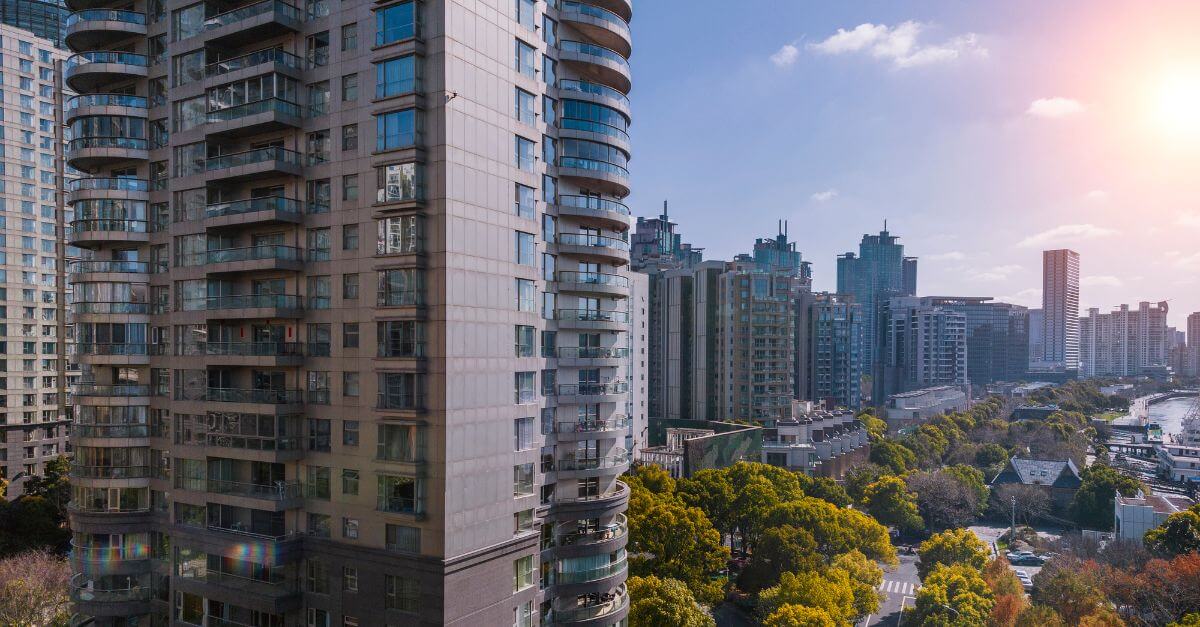Current Market Dynamics
In the first half of 2023, a surge in interest rates posed challenges for bank financing, resulting in a 24% year-over-year decline in commercial real estate investment transactions in the APAC region. This decline was even more pronounced globally, with a staggering 54% drop, reaching its lowest point since 2010.[1] Volatility in financial indices and rising debt costs have impacted lender sentiment and market dynamics worldwide. However, debt market liquidity remains stable, with varying credit availability across regions. It is anticipated that interest rates in APAC are approaching their peak, aligning with the US trend, with expectations of rate declines in 2024. Uncertainty prevails in transaction markets, necessitating ongoing price discovery, which reflects the current state of the market.
Trade tensions, particularly those involving the United States, China, and major APAC countries such as Japan and India, have added complexity. These tensions can disrupt international trade flows and influence investor sentiment, further impacting property valuations. Moreover, APAC markets are notably more policy-driven, with governments playing a pivotal role in shaping real estate dynamics. Regulations on foreign property ownership, tax incentives for real estate investments, and other policy measures vary widely and can significantly impact market conditions.
Sector Dynamics
The Asia Pacific real estate sectors exhibit diverse dynamics:
Offices
Globally, office leasing volumes have yet to fully recover to pre-pandemic levels. Developed APAC office markets, excluding Australia, have generally demonstrated resilience to remote work trends seen in Western markets. The Asia Pacific region reported a 4% year-over-year decline in leasing volumes in H1 2023, outperforming Europe, where leasing volumes dropped by 25%, and the United States, which saw a 15% decline.1 Amid uncertainties surrounding China's economic recovery, the market remains cautiously hopeful that it may eventually lead to a boost in office leasing demand. Office leasing markets in Seoul and Singapore have remained favorable despite weakened leasing demand from tech and banking tenants.
While APAC markets generally lack specific deadlines for meeting energy efficiency standards, a growing number of major corporate tenants are placing increased importance on sustainability and ESG (Environmental, Social and Governance) goals. This trend is particularly pronounced in Australia, Singapore and South Korea, where sustainability considerations are becoming increasingly influential. In these countries, there's a notable shift towards demanding green buildings, which could potentially render older or lower-grade offices, especially those located outside central business districts, obsolete.
Logistics
The logistics sector, driven by e-commerce and supply chain modernization, remains promising. In various APAC markets, e-commerce has experienced a shift in its proportion of total retail sales, mainly due to the rebound of physical retail from pandemic-induced lows. However, it's important to note that e-commerce continues its overall growth trajectory. Additionally, there's evidence of advanced manufacturing operations relocating to India or returning to East Asian destinations like Taiwan and Japan, with Vietnam benefiting significantly from this trend.
Retail
Retail markets are showing signs of recovery and cautious optimism, with increased footfall and retailer sales in dominant locations. This contributes to expansionary sentiment among retail occupiers. Retail real estate yields have risen after years of pressure on the sector, with expectations of rental growth in Hong Kong and Singapore.
Living
Residential markets across Asia Pacific display diverse dynamics, each influenced by unique factors. Some regions contend with undersupply and reduced construction starts, while others face distinct challenges, like China's surplus of unfinished projects and developers’ defaults. These differences shape rental growth and property valuations in various ways, reflecting the distinct economic and market conditions of each country.
Hospitality
The hospitality sector reflects similar trends to retail, with a positive outlook due to resurging tourism. Performance indicators, including hotel occupancy, average room rates and revenue per available room, are on the path to recovery. Market sentiment in countries like Japan, South Korea and Australia is bolstered by strong domestic travel demand. The market anticipates that the positive impact of the reopening of mainland China to tourists will contribute to future improvements in the hospitality sector.
Outlook for the Asia Pacific Market
The Asia Pacific real estate market presents opportunities alongside uncertainties for the future. Property values may experience further fluctuations in the coming years, influenced by economic conditions and refinancing challenges. A gradual recovery is anticipated, possibly in the latter half of the year, with the potential for single-digit returns over the next three to five years. Interest rates in the Asia Pacific region are expected to stabilize, and rate declines are projected for 2024, which could contribute to improvements in market sentiment. However, a combination of increasing financing expenses, global economic unpredictability, geopolitical risks and consistently high real estate values has led investors to adopt a cautious, wait-and-see approach. Despite economic fluctuations, the Asia Pacific real estate market demonstrates resilience, with investors prepared to navigate both challenges and opportunities on the horizon.
How SS&C Can Help
SS&C offers a suite of comprehensive, modular real estate services to a diverse, global client base and has extensive experience supporting the needs of organizations that invest in and manage a broad range of real estate investments across the full spectrum of legal entity structures. Ownership of the entire value chain, from the technology and data centers to the processing infrastructure and personnel, provides SS&C with tremendous control over the quality of deliverables to our clients. We build, own, and operate our own proprietary, advanced, and scalable technology platforms, and also offer the flexibility to work in our clients’ systems.
The end result is a tailored solution to meet the unique requirements of your business while providing scalability, access to expertise, oversight of your property managers, and transparency to your data. As a global firm, SS&C operates with a follow-the-sun processing model to leverage time-zone differences and offer responsive, consistent customer service capabilities in any time zone.
For inquiries or to learn more about our services, contact us or download our "Trends Reshaping the Real Estate Investment Landscape" whitepaper.
References:
- JLL Global real estate perspective, August 2023
- Schroders Asia Pacific real estate market update, May 2023
- CBRE Asia Pacific Real Estate Market Outlook Mid-Year Review, August 2023
[1] JLL Global real estate perspective, August 2023
Written by Iris Ho
Associate Director Private Markets Group






